Dacia Jogger vs Ford Kuga – Which model is better for everyday use?
Everyday use, family trips or long-distance drives – here’s where the differences show.
Discover whether Dacia Jogger or Ford Kuga fits your lifestyle better.
Here’s where it gets real: The technical differences in detail
Costs and Efficiency: Price and efficiency are often the first things buyers look at. Here it becomes clear which model has the long-term edge – whether at the pump, the plug, or in purchase price.
Dacia Jogger has a clearly advantage in terms of price – it starts at 15400 £, while the Ford Kuga costs 34200 £. That’s a price difference of around 18822 £.
Fuel consumption also shows a difference: the Ford Kuga manages with 2.80 L and is therefore significantly more efficient than the Dacia Jogger with 4.70 L. The difference is about 1.90 L per 100 km.
Engine and Performance: Under the bonnet, it becomes clear which model is tuned for sportiness and which one takes the lead when you hit the accelerator.
When it comes to engine power, the Ford Kuga has a decisively edge – offering 243 HP compared to 140 HP. That’s roughly 103 HP more horsepower.
In acceleration from 0 to 100 km/h, the Ford Kuga is distinct quicker – completing the sprint in 7.30 s, while the Dacia Jogger takes 9.80 s. That’s about 2.50 s faster.
In terms of top speed, the Ford Kuga performs slightly better – reaching 200 km/h, while the Dacia Jogger tops out at 174 km/h. The difference is around 26 km/h.
There’s also a difference in torque: the Ford Kuga pulls a bit stronger with 240 Nm compared to 200 Nm. That’s about 40 Nm difference.
Space and Everyday Use: Whether family car or daily driver – which one offers more room, flexibility and comfort?
Seats: Dacia Jogger offers noticeable more seating capacity – 7 vs 5.
In curb weight, the Dacia Jogger is distinct lighter – 1251 kg compared to 1526 kg. The difference is around 275 kg.
In terms of boot space, the Dacia Jogger offers evident more room – 607 L compared to 412 L. That’s a difference of about 195 L.
In maximum load capacity, the Dacia Jogger performs to a small extent better – up to 1819 L, which is about 285 L more than the Ford Kuga.
When it comes to payload, Dacia Jogger barely noticeable takes the win – 582 kg compared to 550 kg. That’s a difference of about 32 kg.
All in all, the Ford Kuga shows itself to be is largely superior and secures the title of DriveDuel Champion.
It impresses with the more balanced overall package and proves to be the more versatile companion for everyday use.
Dacia Jogger
The Dacia Jogger offers a spacious and versatile interior, making it an excellent choice for families seeking practicality and comfort. Its design combines the robustness of an SUV with the functionality of an estate, providing a reliable option for various driving needs. With a focus on affordability, the Jogger ensures that essential features are accessible without compromising on quality.
details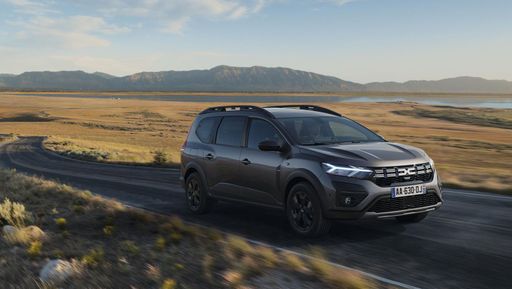 @ dacia-presse.de
@ dacia-presse.de
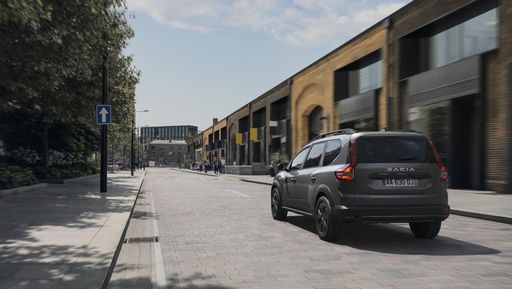 @ dacia-presse.de
@ dacia-presse.de
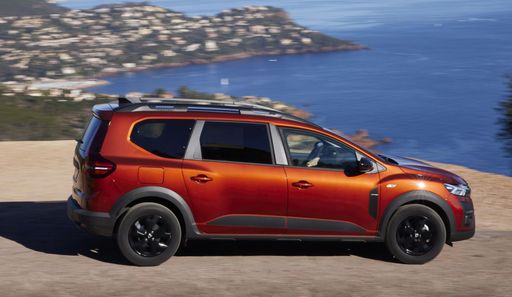 @ dacia-presse.de
@ dacia-presse.de
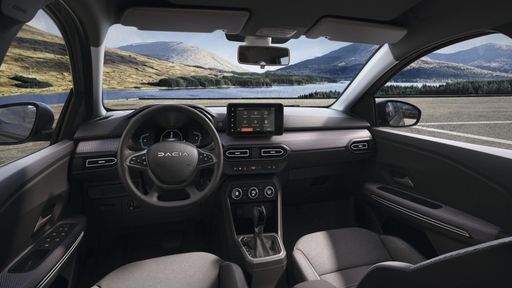 @ dacia-presse.de
@ dacia-presse.de
Ford Kuga
The Ford Kuga stands out in the realm of compact SUVs with its sleek design and dynamic performance capabilities. Its spacious interior is thoughtfully designed to provide comfort and practicality for both driver and passengers, making it an ideal choice for families and adventurers alike. Advanced technology and safety features further enhance the driving experience, ensuring a seamless blend of innovation and reliability on the road.
details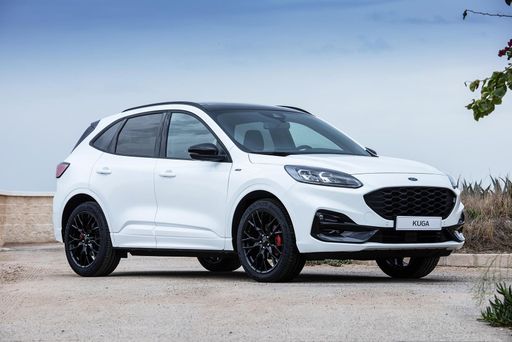 @ kuga.fordpresskits.com
@ kuga.fordpresskits.com
 @ kuga.fordpresskits.com
@ kuga.fordpresskits.com
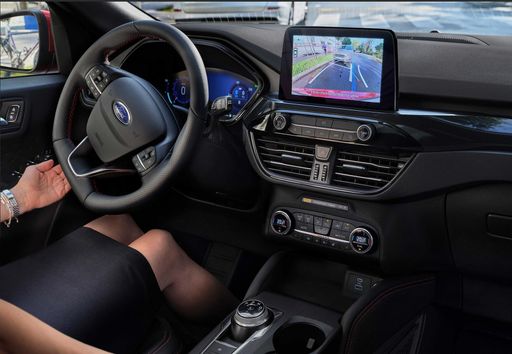 @ kuga.fordpresskits.com
@ kuga.fordpresskits.com

|

|
|
|
|
Costs and Consumption |
|
|---|---|
|
Price
15400 - 23400 £
|
Price
34200 - 46300 £
|
|
Consumption L/100km
4.7 - 7.8 L
|
Consumption L/100km
2.8 - 6.8 L
|
|
Consumption kWh/100km
-
|
Consumption kWh/100km
-
|
|
Electric Range
-
|
Electric Range
68 km
|
|
Battery Capacity
0.60 kWh
|
Battery Capacity
1.1 - 14.4 kWh
|
|
co2
105 - 137 g/km
|
co2
55 - 154 g/km
|
|
Fuel tank capacity
40 - 50 L
|
Fuel tank capacity
42 - 54 L
|
Dimensions and Body |
|
|---|---|
|
Body Type
MPV
|
Body Type
SUV
|
|
Seats
5 - 7
|
Seats
5
|
|
Doors
5
|
Doors
5
|
|
Curb weight
1251 - 1460 kg
|
Curb weight
1526 - 1859 kg
|
|
Trunk capacity
160 - 607 L
|
Trunk capacity
412 L
|
|
Length
4547 mm
|
Length
4604 - 4645 mm
|
|
Width
1784 mm
|
Width
1882 mm
|
|
Height
1674 mm
|
Height
1673 - 1681 mm
|
|
Max trunk capacity
1807 - 1819 L
|
Max trunk capacity
1534 L
|
|
Payload
393 - 582 kg
|
Payload
541 - 550 kg
|
Engine and Performance |
|
|---|---|
|
Engine Type
Full Hybrid, LPG, Petrol
|
Engine Type
Petrol, Full Hybrid, Plugin Hybrid
|
|
Transmission
Automatic, Manuel
|
Transmission
Manuel, Automatic
|
|
Transmission Detail
Automatic Gearbox, Manual Gearbox
|
Transmission Detail
Manual Gearbox, CVT, Automatic Gearbox
|
|
Drive Type
Front-Wheel Drive
|
Drive Type
Front-Wheel Drive, All-Wheel Drive
|
|
Power HP
91 - 140 HP
|
Power HP
150 - 243 HP
|
|
Acceleration 0-100km/h
9.8 - 13.2 s
|
Acceleration 0-100km/h
7.3 - 9.9 s
|
|
Max Speed
167 - 174 km/h
|
Max Speed
195 - 200 km/h
|
|
Torque
160 - 200 Nm
|
Torque
240 Nm
|
|
Number of Cylinders
3 - 4
|
Number of Cylinders
3 - 4
|
|
Power kW
67 - 103 kW
|
Power kW
111 - 178 kW
|
|
Engine capacity
999 - 1598 cm3
|
Engine capacity
1496 - 2488 cm3
|
General |
|
|---|---|
|
Model Year
2024 - 2025
|
Model Year
2025
|
|
CO2 Efficiency Class
C, D
|
CO2 Efficiency Class
E, D, B
|
|
Brand
Dacia
|
Brand
Ford
|
What drivetrain options does the Dacia Jogger have?
The Dacia Jogger is offered with Front-Wheel Drive.
The prices and data displayed are estimates based on German list prices and may vary by country. This information is not legally binding.
